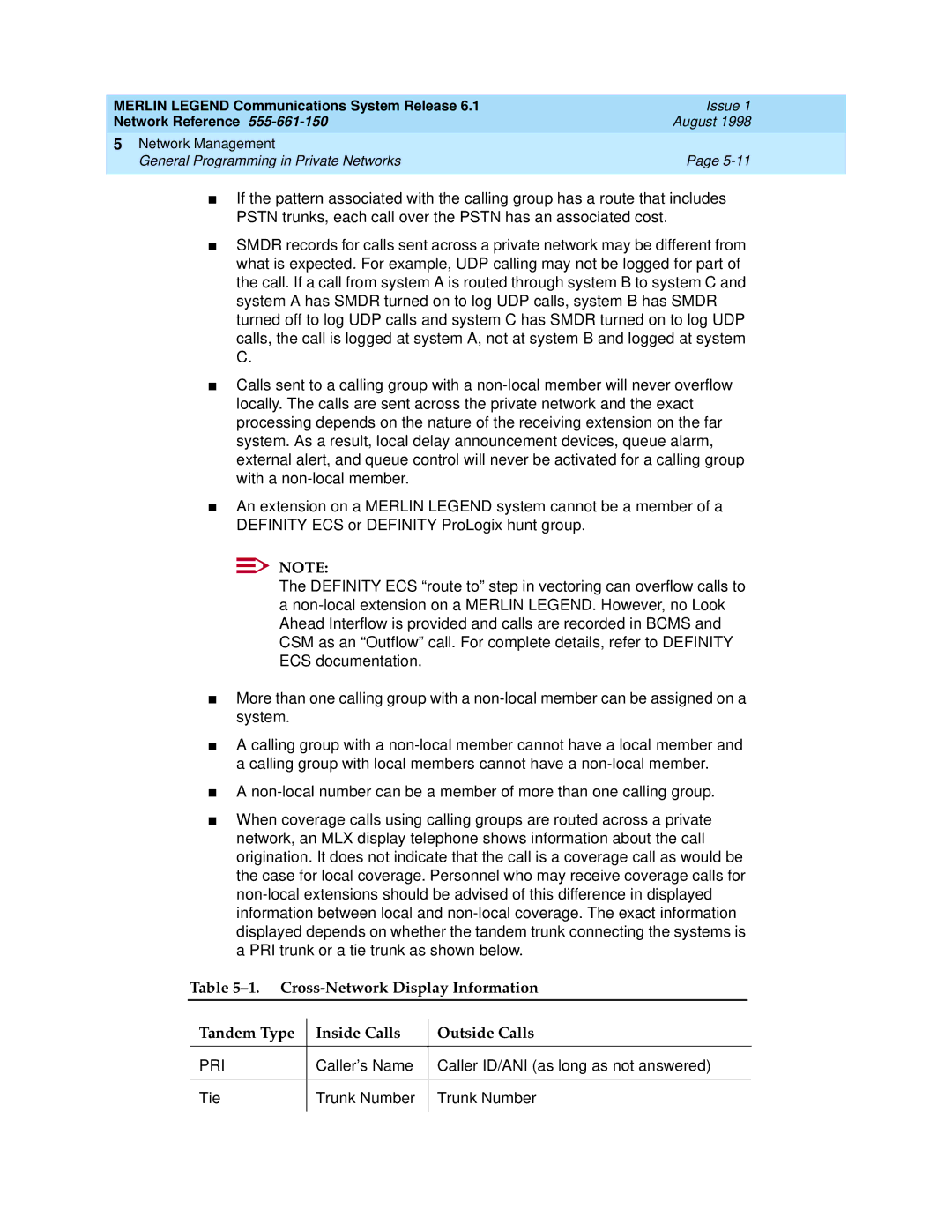
MERLIN LEGEND Communications System Release 6.1 | Issue 1 |
Network Reference | August 1998 |
5 Network Management |
|
General Programming in Private Networks | Page |
|
|
■If the pattern associated with the calling group has a route that includes PSTN trunks, each call over the PSTN has an associated cost.
■SMDR records for calls sent across a private network may be different from what is expected. For example, UDP calling may not be logged for part of the call. If a call from system A is routed through system B to system C and system A has SMDR turned on to log UDP calls, system B has SMDR turned off to log UDP calls and system C has SMDR turned on to log UDP calls, the call is logged at system A, not at system B and logged at system C.
■Calls sent to a calling group with a
■An extension on a MERLIN LEGEND system cannot be a member of a DEFINITY ECS or DEFINITY ProLogix hunt group.
![]()
![]() NOTE:
NOTE:
The DEFINITY ECS “route to” step in vectoring can overflow calls to a
■More than one calling group with a
■A calling group with a
■A
■When coverage calls using calling groups are routed across a private network, an MLX display telephone shows information about the call origination. It does not indicate that the call is a coverage call as would be the case for local coverage. Personnel who may receive coverage calls for
Table
Tandem Type | Inside Calls | Outside Calls |
|
|
|
PRI | Caller’s Name | Caller ID/ANI (as long as not answered) |
|
|
|
Tie | Trunk Number | Trunk Number |
|
|
|
